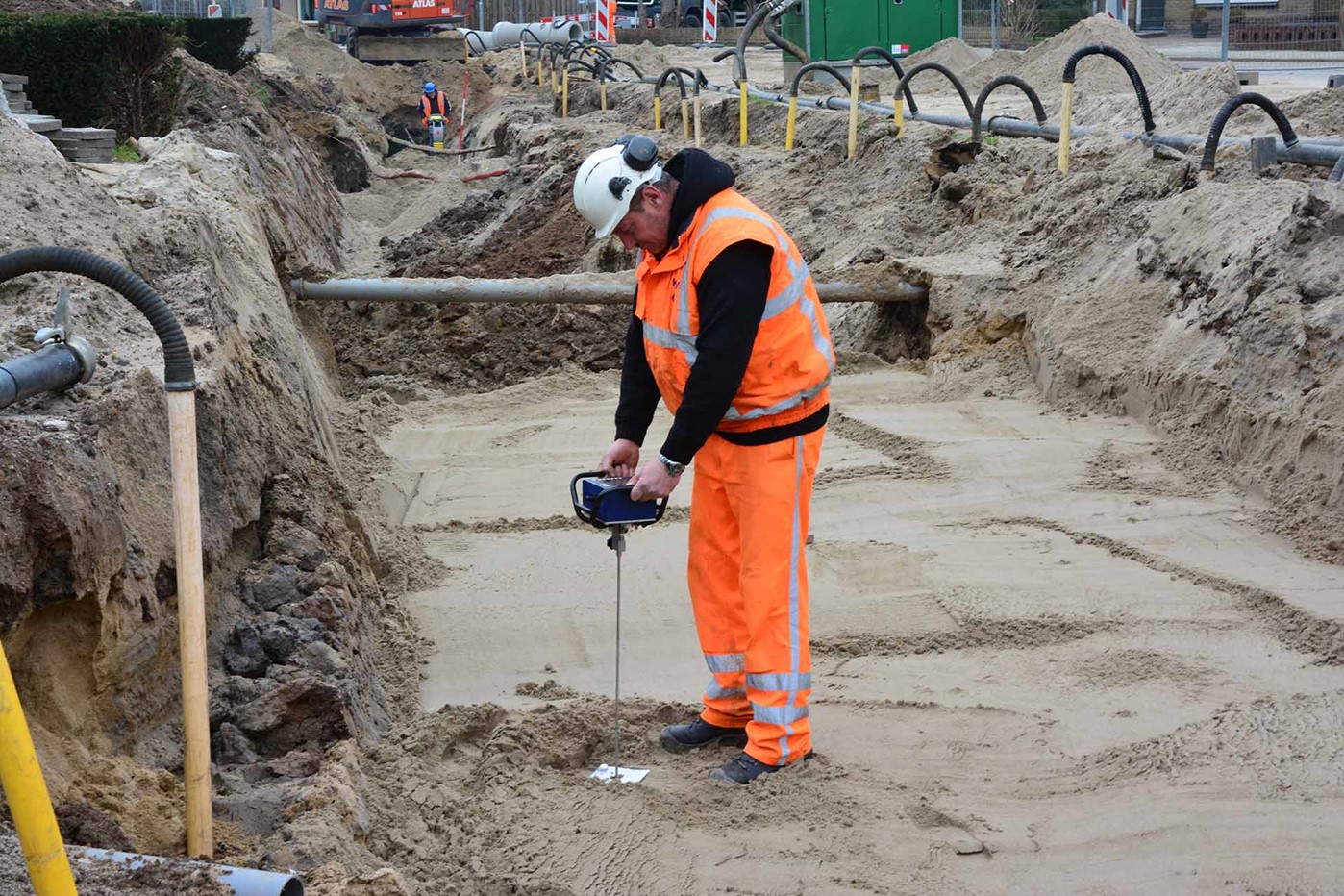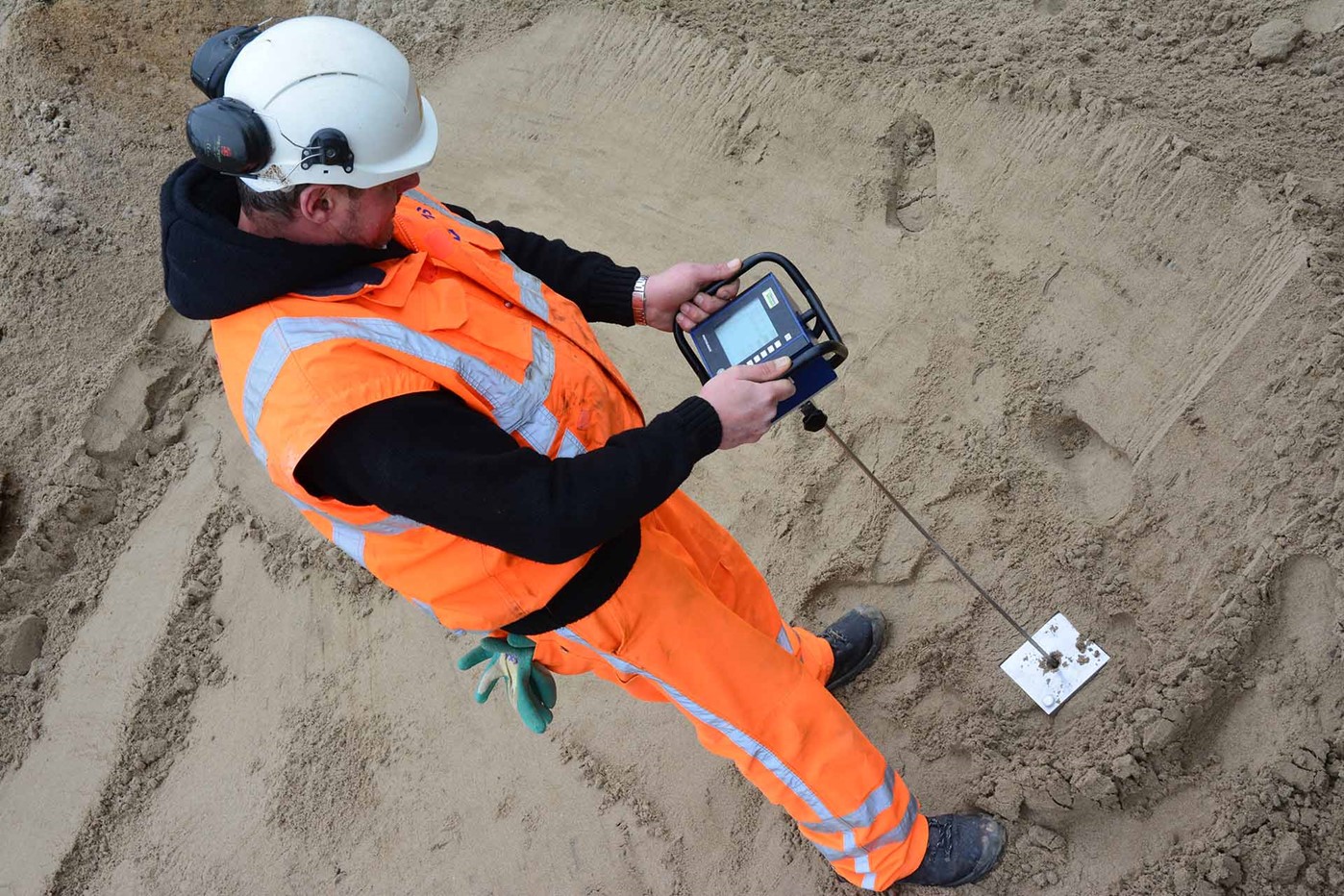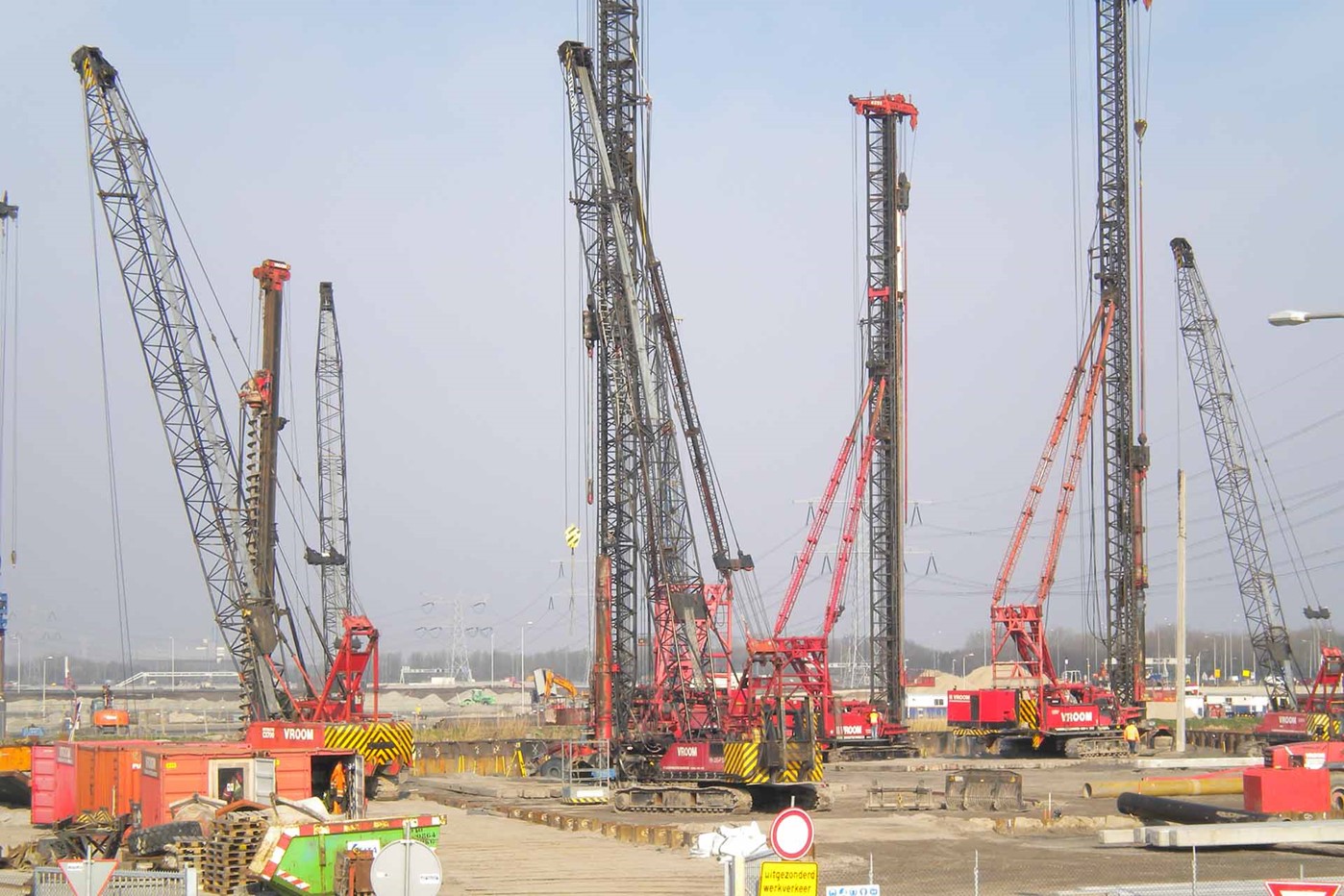
Toppling cranes, lorries getting stuck causing construction works to come to a standstill, personnel slipping or sinking and then staying home as a result of their injuries; these are some of the dangerous situations that occur when the ground of a construction site has insufficient load-bearing capacity. This prompted the ‘Federation of Piling Specialists’ (FPS) to develop the Working Platform Certificate (WPC) a number of years ago.
To ensure the work can actually be carried out safely, a visual inspection is performed first when inspecting the machine layout at the construction site. During this visual inspection, the elements of dryness, load-bearing capacity and the flatness of the construction site are analysed. Further inspection takes place based on the results of one or more soundings or manual soundings. The penetration resistance is one of the main indicators in this regard.
For man and machine, the trafficability (on foot or in a vehicle) of a construction site are determined by the loadbearing capacity of the soil. The condition of the construction site has a direct influence on the stability of the equipment and material, but also on the working conditions of the personnel. Employees run the risk of neck and back complaints as well as other musculoskeletal problems. Moreover, poor terrain conditions lead to accidents every year, sometimes even with a fatal outcome.
Pursuant to the Working Conditions Decree (Construction Process Section), the health and safety of employees on the construction site must therefore be taken into account as early as the design phase of a construction project. This is often already described in the RAW specifications. Therefore, the quality of the top layer, the load-bearing capacity of the ground surface and the type of vehicle are of great importance to a proper trafficability of a construction site.
RAW specifications serve as an information carrier and contract document between the customer and the contractor. The responsibilities, authorities, and risks of both contract partners are defined in a balanced way.
The RAW specifications describe the requirements for compaction for bank fillings, embankments, and plant beds. These requirements are expressed in terms of a specific Proctor value or resistance.

The Proctor test is a test carried out in a laboratory to determine the maximum density of a soil sample. By using different moisture percentages when performing this test, the optimum moisture content can be determined in order to achieve the maximum density of a certain type of soil. Determining the Proctor value in the field is often costly and time consuming. Measuring the resistance, on the other hand, is not.
In cohesive soils (clay and loam), the resistance of a soil is largely dependent on its moisture content (dry clay, high resistance, wet clay, low resistance). In sandy soils, the influence of the moisture content on the resistance is much less. There is a fairly consistent relationship between the measured resistance and the compaction of sandy soils. In many cases, a resistance measurement provides sufficient information about the compaction.
The walkability of a construction site depends in part on the density of the soil. In civil engineering, a soil must be sufficiently compacted to offer the right resistance to all machines that will place a significant burden on construction sites. Vehicles entering a construction site where the soil is not yet sufficiently compacted will easily sink into the ground or topple over. A compacted soil therefore provides a stable basis for buildings, footpaths, and construction sites, amongst other things. The density of the soil is related to the load-bearing capacity of the soil, also known as penetration resistance. This penetration resistance is an important factor in determining the
suitability of foundations, buildings and infrastructure projects.
The penetration resistance is a measure to determine the load-bearing capacity and the root penetration of the soil. This resistance is a mechanical property, which, at a given texture, depends on variable parameters such as moisture content, density, and the strength of the bond between the mineral particles of the soil. The moisture content in the soil has a very strong influence on the resistance of the soil.
This is particularly true for cohesive soils, such as clay and loam varieties. In the case of non-cohesive soils (sandy soils) that are mainly used in civil engineering, the moisture content has less influence on the resistance. For the determination of the trafficability of construction sites for persons and vehicles, we look at the pressure that is exercised on the ground by the person or vehicle. This pressure is called the Vehicle Cone Index (VCI). The Vehicle Cone Index is related to the resistance the soil can offer. This is expressed in the Cone Index (CI). A comparison is then made between the soil number CI and the vehicle number VCI. If the soil number is greater than the vehicle number, the terrain is capable of supporting man and machine. When the soil number is lower, measures must be taken to ensure that personnel and machines can continue to carry out their work safely.

Vroom Funderingstechnieken is an all-rounder in pile systems and pre-fabricated foundation structures. Thanks to their extensive expertise and years of experience in the field of foundations, Vroom is often involved at an early stage in complex, specialist work on foundations. Jaap Bol, Project Manager at Vroom Funderingstechnieken, explains why he regularly uses the penetrologger for compaction checks on construction sites.
‘It is important to determine the load-bearing capacity of construction sites. After all, we wouldn’t want cranes toppling over because the trafficability of the site is inadequate. Therefore, we always measure the resistance of the soil before we start a project,’ says Jaap. ‘First, we analyse the site, taking into account the surroundings and the location of the construction site. In addition, the season gives us an important indication of the condition of the soil. Based on these factors, we determine whether to perform additional measurements, for instance with the penetrologger. The penetrologger is more often used for measurements in autumn than in summer. The reason for this is that the soil is wetter in autumn than it is in summer, meaning the construction pits are wetter and weaker.’
Measuring the trafficability of a construction site in advance ensures that any construction delays are prevented.

Jaap explains. ‘The measurements are performed manually using the penetrologger. Based on the measurements, I draw up a report with subjects such as a general site plan, the weight of the machines that are used during construction, the situation of the soil and, of course, advice on how the load-bearing capacity of the construction site can be restored.’
‘I think the penetrologger is a useful field measuring instrument, because it allows you to print out the measurements on paper. In addition, you can effectively assess the situation of a construction site and give the right advice to the contractor or the engineering firm,’ Jaap says. ‘Measuring the trafficability of a construction site in advance ensures that any construction delays are prevented. It prevents us running into problems during the process. Moreover, you establish in advance whether the site is safe for man and machine. It is true that it requires a small investment prior to starting as a project, but in the long run it will save money. After all, you don’t run the risk of damaging the material or equipment you use because of problems with the soil.’
In agriculture, the penetrologger is also regularly used as field measuring equipment. Read more about that in the article: Soil compaction, an underestimated problem.
Want to learn more about the Penetrologger or order one? Check the extensive product page or contact one of our specialists.